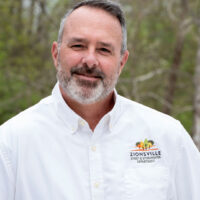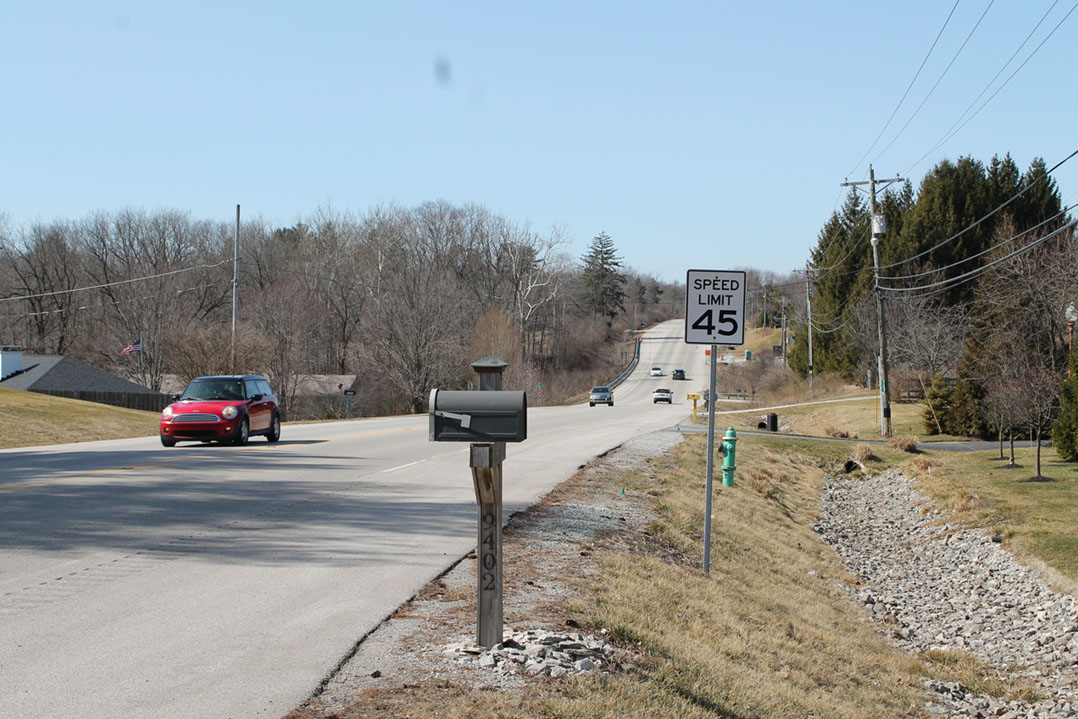
During Zionsville Mayor Emily Styron’s 2021 State of the Town address, a participant submitted a question that town officials are frequently asked: When will a full-length pathway be added to Oak Street?
Town officials said they plan to begin a process later this year to explore options to add an Oak Street multi-use pathway heading toward Whitestown.
Styron said the town wants to continue expanding pathways so residents can walk and bike to more places, but the process will take time.
Town officials said even an interim-condition multi-use pathway on Oak Street would take years to develop and implement and would need to be done in phases.
“Everything comes at a cost,” Styron said during last month’s recorded address. “It is a complicated process getting those real multi-use pathways installed along Oak Street. And when we’re going to do this, we want to make sure it is ready for a variety of uses – a person walking their dog and a family riding their bikes. Nothing is easy or cheap when it comes to pathways and roadway projects.
“What you will often see is pathways come along (with) new roadway projects. In this case, we need to really budget for the actual pathway project itself, and it will likely be more of a 24-month process that we are hoping to get started later this year.”
 Lance Lantz, the town’s director of public works, said pathways are, per square foot, generally some of the town’s most expensive construction projects. He said pathways are typically installed when development occurs because developers are required to add a pathway when a development occurs along a roadway.
Lance Lantz, the town’s director of public works, said pathways are, per square foot, generally some of the town’s most expensive construction projects. He said pathways are typically installed when development occurs because developers are required to add a pathway when a development occurs along a roadway.
“That puts the burden on (the) development and removes it from the town,” Lantz said. “However, development is never directly adjacent, nor does it proceed in a manner that would result in a continuous pathway, so the town, or any municipality, always has to fill in those gaps at some point.”
Lantz said an important consideration the town must weigh is the Oak Street corridor’s planned redesign and widening in segments at an unspecified date, which gives the town multiple choices when considering a connected, bi-directional pathway along one side of the street.
To add a connected pathway, town officials believe they will need to purchase property through potentially costly right-of-way land acquisitions. Up to three stream crossings add to the town’s challenges because the town would likely need to construct a pedestrian bridge, Lantz said. And while the town could explore alternate, indirect routes, town officials understand residents’ desire for a direct pathway along the street.
Lantz said the town could design a connected pathway now to adhere to the build condition of the future redesigned roadway. But other variables, such as additional projects that could alter the landscape, might make the task more complex. The option would be costly and would still need to address the multiple stream crossings along Oak Street, Lantz said.
Another option would be to construct a connected pathway now that would be removed when Oak Street is widened. Costs to build a new connected pathway afterward could be split with developers, potentially making the option financially viable, according to town officials.
But Lantz favors a third option that would implement a hybrid approach.
“There are certain things you want to design to the future build condition,” Lantz said. “If you are going to invest in a pedestrian bridge, and you are going to spend that kind of money, you want to make darn sure you are never going to (remove) that in the future.”
The hybrid option would include a road diet, or restriping a stretch of road, to repurpose existing roadway. Oak Street, a former state road, was designed to highway standards, Lantz said, meaning it has 12- to 14-foot travel lanes and wide shoulders. He said it might be possible to find areas of the roadway to install a protected pedestrian facility, such as a railing.
“Could we use any asphalt, any pavement that’s out there now and repurpose it?” Lantz said. “Do we need 12- and 14-foot lanes out there, or can we go down to 11? I think that this hybrid option, if we are going to invest money in the near term, knowing that this corridor is going to expand at some point in the future, is probably the best.”
Corridor study
Lance Lantz, Zionsville’s director of public works, envisions identifying areas where extra pavement on Oak Street could be repurposed, connected and used with a protected pedestrian facility to form a continuous pathway.
Lantz wants the town to conduct a corridor analysis later this year to determine if a safe, separated pedestrian facility or bicycle facility can be established in the short term.
“The ultimate sacrifice may be small stretches, at least initially, that are shared use (between) vehicles and bicycles, but given the speeds and volumes on that road, we really don’t want to do that,” Lantz said. “A lot has to be fleshed out, but the key points are we can probably get a usable multi-use corridor through there that is separate and protected from the roadway, but we have to understand that in the future it is going to get blown up with a road project, and we are basically just buying some time.”





